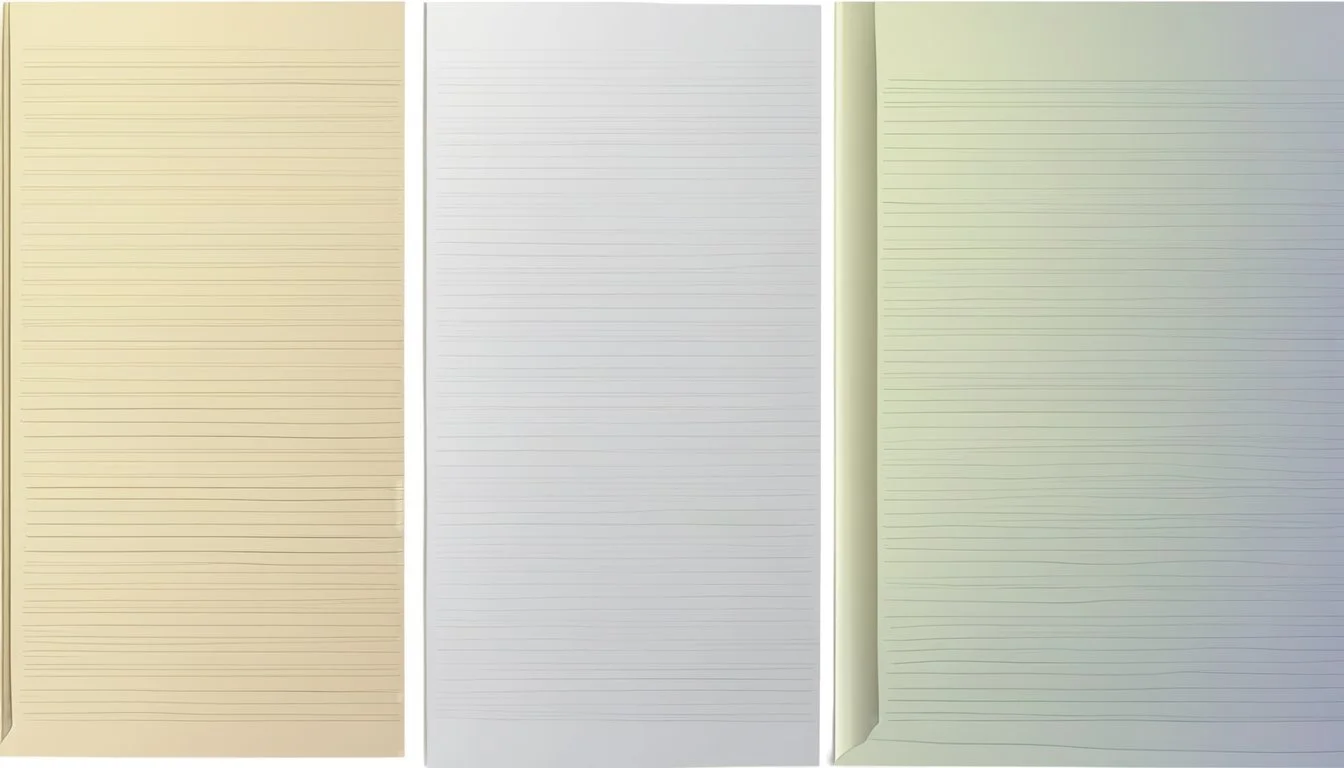Analyzing Sociopath Handwriting Characteristics
Handwriting analysis has long fascinated those seeking insight into human personalities. While some claim it reveals hidden traits, the scientific evidence supporting graphology remains limited. Nonetheless, the idea of identifying sociopaths through their handwriting continues to intrigue many.
Research on sociopath handwriting suggests there is no definitive set of traits that can reliably identify antisocial personality disorder through handwriting alone. Some graphologists point to characteristics like precision, formality, and lack of terminal strokes as potential indicators. These claims, however, lack robust scientific backing.
Experts caution against drawing conclusions about complex personality disorders based solely on handwriting analysis. While certain writing patterns may correlate with specific traits, diagnosing sociopathy or any mental health condition requires comprehensive psychological evaluation by qualified professionals. The allure of handwriting analysis persists, but its reliability in identifying sociopaths remains questionable.
The Science of Graphology
Graphology examines handwriting to interpret personality traits and behaviors. This field combines elements of psychology and writing analysis to draw conclusions about individuals.
Foundations of Handwriting Analysis
Graphology studies various aspects of handwriting, including pressure, slant, size, and spacing. Pressure indicates emotional intensity, while slant may reveal social tendencies. Size can reflect self-esteem, and spacing may show organization skills.
Handwriting is viewed as "brain writing" - a reflection of neural processes. Graphologists analyze letter formations, margins, and baseline characteristics. They examine the way loops are formed and how t's are crossed.
Some graphologists use specialized tools to measure precise angles and pressures in writing samples. These measurements are then compared to established baselines to form interpretations.
Graphologist Expertise
Trained graphologists develop skills to detect subtle nuances in handwriting. They learn to recognize over 300 personality traits from writing samples. Graphologists often specialize in particular areas like personnel selection or criminal profiling.
Certification programs exist for graphologists, though requirements vary. Many undergo years of study and supervised practice. Experienced graphologists can quickly spot key indicators in a writing sample.
Graphologists may work with businesses, law enforcement, or private clients. They analyze signatures, notes, and longer writing samples. Some graphologists collaborate with psychologists or other experts to provide comprehensive personality assessments.
Characteristics of Sociopath Handwriting
Handwriting analysis can offer insights into personality traits, including potential indicators of sociopathic tendencies. While not definitive on its own, certain handwriting characteristics may align with sociopathic behaviors.
Pressure and Emphasis
Sociopaths often exhibit strong pressure in their writing. This can manifest as deep indentations on the paper or dark, heavy strokes. The pressure may be inconsistent, with sudden changes in intensity.
Bold letters or words might appear randomly throughout the text. This erratic emphasis could reflect impulsivity or a desire for attention.
Overly sharp or pointed letter formations may indicate aggression or manipulative tendencies. Look for exaggerated t-crosses or i-dots that pierce the paper.
Size and Proportion
Sociopathic handwriting may display unusual size variations. Some letters might be disproportionately large compared to others, suggesting an inflated sense of self-importance.
Uppercase letters are often noticeably bigger than lowercase ones. This exaggeration can indicate narcissistic traits or a need for dominance.
Inconsistent letter sizes within words or sentences are common. This irregularity might reflect mood swings or unpredictable behavior patterns.
Slant and Baseline Orientation
The slant of sociopathic handwriting tends to be irregular. It may shift between right, left, and vertical within the same text, possibly indicating unstable emotions or deceptive nature.
Baseline orientation often wavers. Words might rise or fall relative to the line, rather than following a straight path. This could suggest dishonesty or a disregard for social norms.
Abrupt changes in slant or baseline can occur mid-word or mid-sentence. These shifts may correspond to rapid mood changes or manipulative tactics.
Spacing and Margins
Sociopathic handwriting frequently features inconsistent spacing. Gaps between words can vary widely, potentially reflecting erratic thought processes or impulsivity.
Cramped letters within words, contrasted with large spaces between words, might indicate conflicting desires for connection and isolation.
Margins may be ignored or irregular. Left margins could start wide but narrow as the text progresses, possibly showing initial restraint giving way to more uninhibited expression.
Overlapping words or lines might occur, suggesting a disregard for boundaries. This characteristic could mirror the sociopath's tendency to invade others' personal space or ignore social norms.
Handwriting Versus Personality Traits
Handwriting analysis provides insights into personality traits, revealing aspects of emotional, social, and cognitive functioning. While not definitive, certain handwriting characteristics may correlate with specific personality tendencies.
Emotional Characteristics
Handwriting pressure can indicate emotional intensity. Heavy pressure may suggest strong emotions or stress, while light pressure could point to sensitivity. Large handwriting often correlates with extroversion and confidence, whereas small writing may indicate introversion or focus on detail.
Slanted writing reveals emotional expression. Right-slanted writing suggests openness and future orientation. Left-slanted writing may indicate reserve or past focus. Vertical writing implies emotional control and objectivity.
The shape of letters can also be telling. Rounded letters may reflect a nurturing nature, while pointed letters could suggest aggression or intensity.
Social Interactions
Signature size and placement offer clues about social behavior. Large signatures may indicate self-confidence or a desire for attention. Small signatures could suggest modesty or a preference for privacy.
Spacing between words reflects social boundaries. Wide spaces may indicate a need for personal space, while close spacing could suggest a desire for closeness in relationships.
Connected letters in cursive writing might indicate logical thinking and social connectivity. Disconnected letters could point to intuition and selectivity in social situations.
Letter size consistency throughout text may reflect social adaptability. Consistent size suggests stability, while varying sizes could indicate mood fluctuations or adaptability.
Logical Processing
The organization of handwriting on the page can reveal thinking patterns. Straight lines and even margins may indicate structured thinking and self-discipline. Uneven or sloping lines could suggest flexibility or inconsistency in thought processes.
The way letters are formed can reflect cognitive style. Simplified letters may indicate efficiency and practicality. Complex or embellished letters might suggest creativity or attention to detail.
Consistency in letter formation throughout text can indicate focus and concentration levels. Variations may suggest adaptability or distractibility.
The speed of writing, inferred from letter formation, can indicate information processing speed. Rapid, barely legible writing might suggest quick thinking, while careful, precise writing could indicate thoughtful deliberation.
Comparative Analysis in Handwriting
Handwriting analysis involves examining various elements across different samples and contexts. This comparative approach reveals insights into individual traits, developmental changes, and stylistic variations.
Age-Related Changes
Handwriting evolves throughout a person's life. Children's writing typically starts large and uneven, gradually becoming smaller and more controlled with age.
Adolescents often experiment with different styles, leading to temporary inconsistencies. Adult handwriting tends to stabilize but may show subtle changes over time.
Elderly individuals might display shakier lines or larger letters due to physical factors. Analyzing these age-related shifts can provide clues about the writer's developmental stage or potential health issues.
Signature Versus Regular Writing
Signatures often differ significantly from everyday handwriting. They are typically more stylized and personalized, reflecting how individuals want to present themselves.
Some people use elaborate flourishes or simplified versions of their names in signatures. Regular writing tends to be more practical and legible.
Comparing signatures to standard writing can reveal inconsistencies that may indicate forgery attempts. It can also provide insights into a person's public versus private persona.
Cursive Versus Print Styles
Cursive and print styles offer distinct characteristics for analysis. Cursive writing is generally faster and more fluid, with connected letters flowing across the page.
Print handwriting consists of separated letters, often appearing more deliberate and precise. Some individuals blend elements of both styles, creating a unique hybrid.
Comparing these styles within a single sample or across multiple writings can indicate the writer's education, cultural background, or personal preferences. It may also reveal situational factors, such as time constraints or the importance of legibility in different contexts.
Interpreting Handwriting in Sociopathy
Handwriting analysis offers potential insights into sociopathic traits, though its reliability remains debated. Graphology techniques examine specific writing elements to infer personality characteristics and behavioral tendencies.
Identifying Sociopathic Tendencies
Certain handwriting features may indicate sociopathic traits. Large, flamboyant signatures can suggest grandiosity and attention-seeking. Inconsistent letter sizing or spacing may reflect impulsivity or lack of empathy.
Sharp, angular writing could point to aggression or manipulation. Heavily pressured strokes might indicate high levels of tension or anger. Simplified or printed letters, rather than cursive, may suggest emotional detachment.
Graphologists also look for signs of dishonesty, such as discrepancies between capital and lowercase letters or sudden changes in slant. However, no single trait definitively proves sociopathy. Multiple indicators must be considered together.
Use of Graphology in Forensics
Law enforcement sometimes employs handwriting analysis in criminal investigations. Graphology can provide clues about a suspect's personality or state of mind at the time of writing.
Forensic document examiners study threatening letters, ransom notes, or other crime-related writings. They analyze pressure, slant, spacing, and other elements to build offender profiles.
Some experts claim handwriting can reveal deceptive intentions or attempts to disguise one's writing. However, the scientific validity of graphology in legal settings remains controversial.
Courts generally do not accept handwriting analysis as definitive evidence of personality or criminal behavior. Its use is typically limited to authenticating documents or comparing known and questioned writings.
Critical Views on Handwriting Analysis
Handwriting analysis, also known as graphology, faces significant skepticism in the scientific community. Many experts argue that there is insufficient evidence to support its validity as a reliable method for personality assessment.
Critics point out the lack of standardized methodologies and scientific rigor in graphological practices. They contend that handwriting analysis often relies on subjective interpretations rather than empirical data.
Numerous studies have failed to demonstrate consistent correlations between handwriting characteristics and personality traits. This lack of reproducible results casts doubt on graphology's claims of accuracy.
Psychologists argue that handwriting is influenced by various factors, including education, cultural background, and physical conditions. These variables make it challenging to draw definitive conclusions about an individual's personality solely from their handwriting.
The American Psychological Association does not recognize handwriting analysis as a scientifically validated tool for psychological assessment. This stance reflects the broader scientific consensus regarding graphology's limitations.
Legal experts caution against using handwriting analysis in criminal investigations or court proceedings. They emphasize its potential for bias and misinterpretation, which could lead to erroneous conclusions.
Despite these criticisms, some proponents continue to advocate for handwriting analysis in certain contexts. However, the scientific community largely maintains that more rigorous research is needed to establish its reliability and validity.
Leveraging Handwriting Analysis for Personal Insight
Handwriting analysis offers a unique avenue for personal development and self-awareness. This technique examines various aspects of an individual's writing style to gain insights into their personality traits and behaviors.
Graphologists study factors such as letter size, slant, pressure, and spacing to draw conclusions about a person's characteristics. For example, large handwriting may suggest confidence, while small writing could indicate introversion or attention to detail.
The analysis process can reveal strengths and areas for improvement in one's personality. Individuals may discover hidden talents or tendencies they were previously unaware of through this examination.
Key elements analyzed in handwriting:
Letter size and shape
Slant and baseline
Spacing between words and lines
Pressure applied to the writing surface
Signature style
By understanding these elements, people can gain valuable insights into their communication styles, emotional expressions, and decision-making processes. This knowledge can be applied to personal and professional development efforts.
Handwriting analysis should be viewed as one tool among many for self-reflection. While it can provide interesting perspectives, it should not be considered a definitive assessment of personality or abilities.





